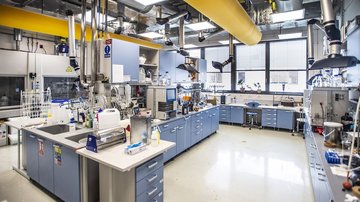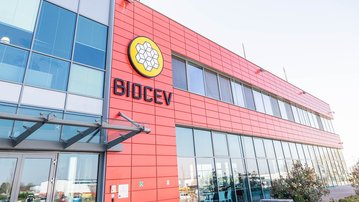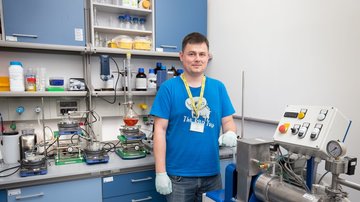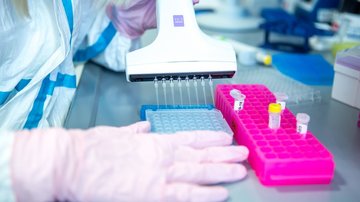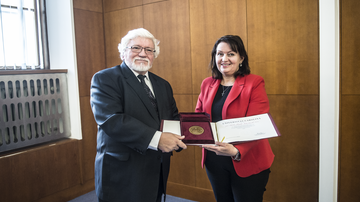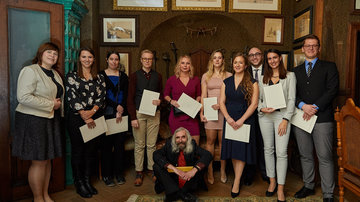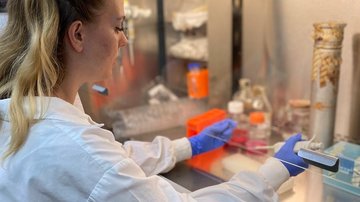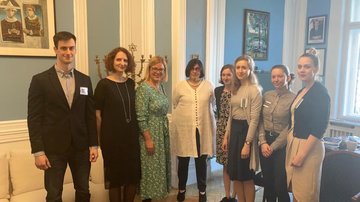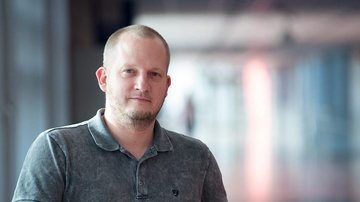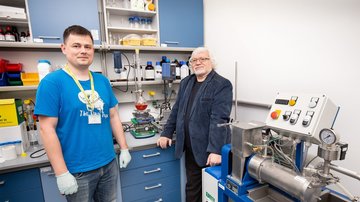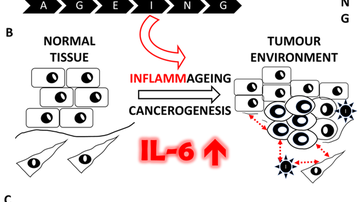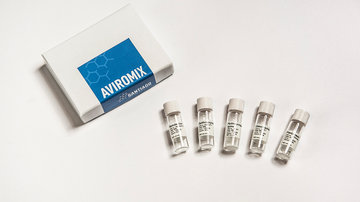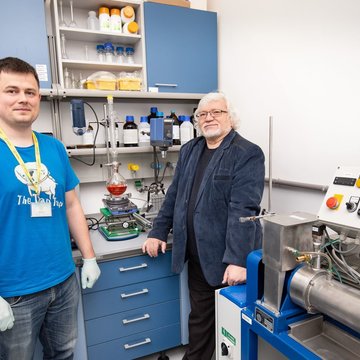
Laboratory of Medicinal Chemistry
With alaptide against wrinkles
"Invented at Charles University, made in the Czech Republic, dedicated to the future," says a box of the new SAIN anti-wrinkle cream. It will be launched this year as the first product for human use containing the active substance alaptide.
The story of alaptide began in the 1980s, when Evžen Kasafírek, a scientist at the now defunct Research Institute for Pharmacy and Biochemistry, synthesized a dipeptide, in which, together with biologist Václav Plaisner, they soon proved had "miraculous" regenerative effects and could accelerate wound healing. Although the molecule was patented, it never entered into practice.
The original research from around 2010 was built on by organic chemist Vladimír Král and molecular biologist Pavel Martásek from the 1st Medical Faculty of Charles University - later from the BIOCEV research centre - and together they improved the effects and production of alaptide. This appealed to commercial partners from GlobeTech Innovation, and the first SAIN regenerating creams will be launched this year.
Cream done, development continues
The transfer of scientific knowledge was mediated by a university subsidiary, Charles University Innovations Prague (CUIP). "Not only thanks to the unique research done by professors, but also the mutual trust, openness and approach of the entire CU and CUIP team, we can now witness the birth of purely Czech products called SAIN," praises Michal Meliška, CEO of GlobeTech Innovation.
For scientists, it is far from over. "We are still working on further research, whether to improve the formula and effect of SAIN creams, but especially on the application of alaptide in combination with other peptides and additives in clinical practice in wound healing," describes Professor Martásek. The use of the "new alaptide" in clinical practice was patented last year, and the preparatory phases of clinical studies are currently underway. And according to the first preclinical results, alaptide shortens the healing time of postoperative wounds in healthy people by two-thirds and in chronic wounds up to seven times! Peptides are short proteins composed of two to one hundred amino acids and play an irreplaceable role in a number of processes in the body. Alaptide acts as a signalling molecule that triggers tissue regeneration processes, but also affects the functioning of the immune system.
The formula modified by Král
"Professor Král was an organic chemist, so he first focused on the preparation itself - when the whole process of chemical synthesis of alaptide was significantly simplified and shortened, which can be thought of as a simplified recipe for food preparation," adds Milan Jakubek, who leads the research group at BIOCEV, and he continues on this subject, although Král died two years ago.
"By using new approaches and technologies, he managed to significantly innovate the whole synthesis, thanks to which it is possible to produce alaptide industrially. In addition, Professor Král and Professor Martásek also focused on a new drug formulation - chemical synthesis creates a powder that becomes a truly effective drug only after appropriate treatment," explains Jakubek, who is working on further improvements to the drug formulation, especially using the latest technologies, such as nanomilling: "Particle size significantly affects the resulting biological properties; smaller particles have different pharmacokinetics - a faster onset of action or permeability through the skin."
Ingenious shape of the molecule
"The alaptide molecule is composed of two amino acids that are cleverly linked into a ring," describes Martásek. The inspiration for the initial synthesis was the neuropeptide L-propyl-L-leucylglycinamide, which is commonly found in the human body and has regenerative effects. However, this peptide is rapidly degraded by digestive enzymes, making it unusable for practical use. The non-traditional ring bond in the alaptide molecule is degradation-resistant, and synthetic alaptide has even higher healing effects.
Professor Martásek decided to add other substances to the alaptide molecule, such as individual amino acids including cysteine and arginine, as well as other short peptides with a length of two to forty amino acids, which further improved the resulting regenerative and therapeutic effect.
"I am very pleased to be able to build on a unique research project and to launch the first results of our work in the form of cosmetics products this year. We believe that the products will also enter into clinical practice, where they will help patients. For us scientists, every use of scientific results in practice is a huge success and motivation for further work," concludes Martásek.
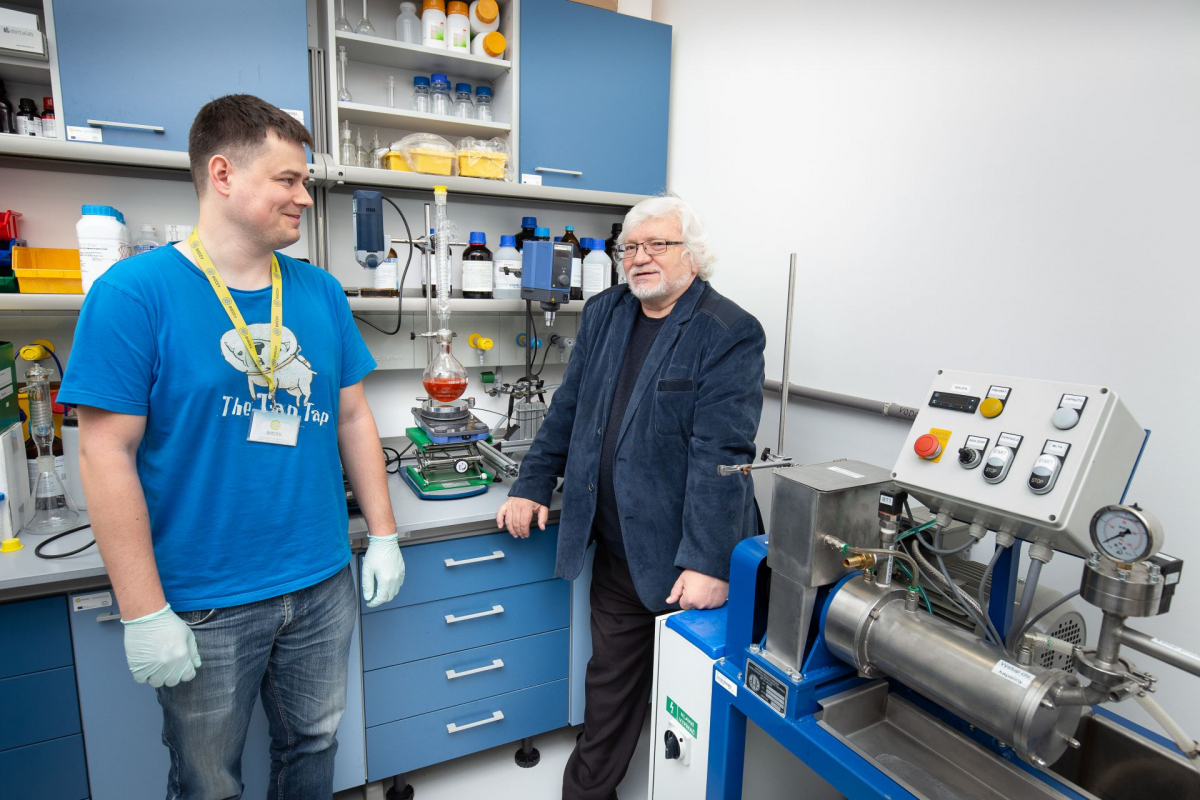
Prof. MUDr. Pavel Martásek, DrSc., works as the scientific director of the BIOCEV centre. He is a graduate of the 1st Faculty of Medicine, Charles University and a figure in world biomedicine. His activities cover a wide range of areas from inherited metabolic diseases, through the chemistry and biology of nitric oxide to the search for drugs. He has a lot of foreign experience.
Ing. Milan Jakubek, Ph.D., leads his own group dealing with medicinal chemistry at the BIOCEV centre. He is a graduate of the University of Chemical Technology in Prague and a student of Professor Vladimír Král.
Source: Forum 2/2021, Magazine of the Charles University
Text: Pavla Hubálková
Photo: Michal Novotný






